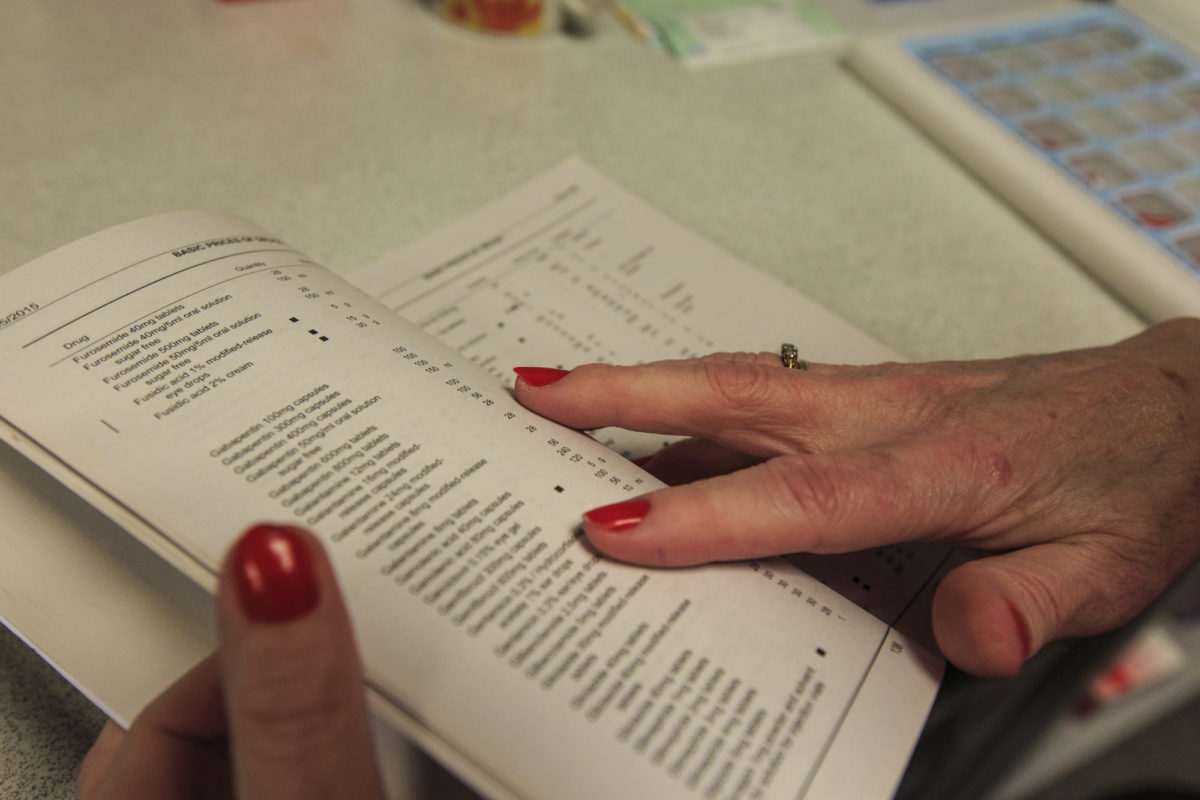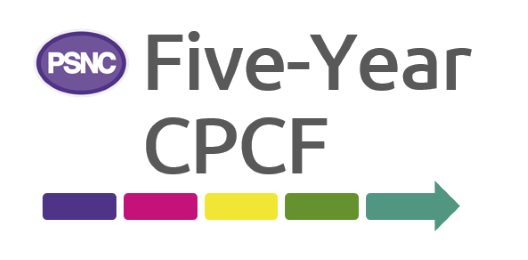How discount deduction works
Published on: 18th June 2013 | Updated on: 11th December 2023
Update: 28/03/23 – The Drug Tariff for April 2023 will contain changes to the discount deduction arrangements for pharmacy contractors, including changes which Community Pharmacy England rejected, and are subsequently being imposed.
The changes being implemented from 1 April include:
- All concession lines to be considered as Group Items for Discount Not Deducted i.e. DND or zero discount (ZD) items
- Rate of discount deduction for generics to increase from 17.52% to 20%
See NHS Prescription Services announcement.
Please click here for more details on these changes.
Update: 26/08/22 – New arrangements for the application of discount deduction to community pharmacy payments have been agreed by Community Pharmacy England and the Department of Health and Social Care (DHSC).
The new discount deduction system will see the current single scale split into three groups: one each for generic medicines, branded medicines, and appliances. Rather than one set value for all items dispensed, separate fixed values have been determined for each group.
From October 2022, discount deductions will begin transitioning to these new arrangements. The transition will take place over six financial quarters, concluding in January 2024 when contractors’ discount deduction will be calculated solely using the new fixed rates for each group. Advance notice of these changes are outlined in the Preface section of the September 2022 Drug Tariff.
The changes to discount deduction arrangements form part of a series drug reimbursement reforms proposed by DHSC following a public consultation in 2019. Please see below for more details on the new discount deduction arrangements, including FAQs.
For a full detailed explanation on the background to these changes, how the new arrangements and transition period will work, worked examples, and FAQs, please refer to the following resources produced by Community Pharmacy England.
Community Pharmacy England Briefing 027/22: Discount Deduction Scale changes explained
Community Pharmacy England Briefing 028/22: FAQs on the Changes to the Discount Deduction Scale
Discount deduction impact calculator
Community Pharmacy England has developed a webtool to help community pharmacy contractors estimate the impact on their payments.
The calculator aims to illustrate the changes to discount deduction that a pharmacy could experience during the transition to the new arrangements from October 2022 to January 2024, when the new system will be fully in place. Community Pharmacy England’s calculator requires contractors to input information about their individual pharmacy dispensing mix (i.e. split of reimbursement by appliances, brands and generics) to provide an estimate for the level of impact the new discount deduction system will have. The impact on individual pharmacies cannot be estimated without using dispensing mix data, meaning that any estimates which do not take this into account will not be reliable.
Community Pharmacy England’s Discount Deduction Transition Calculator
Before using Community Pharmacy England’s calculator, contractors first need access to their dispensing mix data. If you do not know this, you may be able to obtain this information from your system supplier, or you could use the prescription item reports (‘PIR’) available from the NHS Business Services Authority (NHSBSA) to estimate your figures. Find out more about the PIR and how to use it.
Mix estimator
Community Pharmacy England has developed a second tool which contractors can use to generate a mix estimate for their pharmacies using their PIR. The tool will allow contractors to enter their PIR data and receive mix values for their appliance, generic and brand reimbursement. They can then use these values in the transition calculator, to estimate the impact of the change to the new deduction arrangements on their payments.
(old) Community Pharmacy England’s Mix Estimator (for PIRs up to September 2022)
(Updated to v6 on 19/12/2022 – please re-download)
(new) Community Pharmacy England’s Mix estimator (for PIRs covering October 2022 onwards)
The below table shows estimates of how much national Cat A & M reimbursement was associated with concession lines each month from Jul-19 onwards.
| Month | Share | Month | Share | Month | Share |
| Jul-19 | 6.4% | Dec-20 | 4.0% | May-22 | 14.1% |
| Aug-19 | 6.4% | Jan-21 | 5.3% | Jun-22 | 18.1% |
| Sep-19 | 6.3% | Feb-21 | 5.6% | Jul-22 | 20.9% |
| Oct-19 | 5.3% | Mar-21 | 5.3% | Aug-22 | 24.9% |
| Nov-19 | 7.7% | Apr-21 | 4.9% | Sep-22 | 28.8% |
| Dec-19 | 7.9% | May-21 | 4.3% | ||
| Jan-20 | 6.5% | Jun-21 | 4.3% | ||
| Feb-20 | 7.5% | Jul-21 | 4.6% | ||
| Mar-20 | 19.0% | Aug-21 | 4.7% | ||
| Apr-20 | 20.7% | Sep-21 | 4.7% | ||
| May-20 | 20.0% | Oct-21 | 3.8% | ||
| Jun-20 | 13.2% | Nov-21 | 6.6% | ||
| Jul-20 | 10.4% | Dec-21 | 8.6% | ||
| Aug-20 | 9.5% | Jan-22 | 12.3% | ||
| Sep-20 | 8.8% | Feb-22 | 11.2% | ||
| Oct-20 | 9.2% | Mar-22 | 12.1% | ||
| Nov-20 | 4.1% | Apr-22 | 12.4% |
Contractors are reimbursed for the medicines they dispense each month by the NHS Business Services Authority (NHSBSA), less an amount of discount deduction or ‘clawback’. The ‘clawback’ amount is calculated according to a discount deduction scale (DDS) shown in the Part V of the Drug Tariff and is based on the monthly value of medicines dispensed (Net Ingredient Cost or NIC) for each contract.
It is possible to work out from the DDS (Part V of the Drug Tariff) what the deduction rate will be for a given value of standard discount rate products dispensed (the value of zero discount-rated products dispensed is not considered when calculating the discount deduction rate). Currently the average level of discount deduction across all products is approximately 8%.
Download our Factsheet: All you need to know about: Discount deduction – In this Community Pharmacy England factsheet our Dispensing and Supply Team explains how discount deduction is applied to NHS prescriptions and which products are eligible to be included in the ‘Discount Not Deducted’ list.
For a list of all the monthly changes to the DND status of products please see the following page Notice of changes to discount not deducted (DND) status of products.
Click on a heading below to reveal more information.
The drugs for which discount is not deducted also known as ‘DND’ (Discount Not Deducted) list, in Part II of the Drug Tariff, contains names of products which have no discount deduction applied to their final reimbursement price. The list, updated monthly by the Department of Health and Social Care (DHSC) includes grouped and individual items. Items included under the ‘Group Items’ heading are not listed again individually in Part II.
Group items
- Products on price concession
- Cold Chain Storage (ALL): To qualify, a products’ SPC must state that it requires storage in a refrigerator at 2 – 8°C. Products which require cold-chain storage after re-constitution in the pharmacy are not eligible for the group listing under cold chain storage
- Schedule 2 or 3 Controlled Drugs: Products containing drugs listed in Schedules 2 and 3 of the Misuse of Drugs Regulation 2001
- Cytotoxic or Cytostatic item (ALL):
- Immunoglobulins (ALL)
- Insulins for injection (ALL)
- Vaccines and antisera (ALL)
- Unlicensed medicines: ‘Specials’ not listed in Part VIIIB where the product has been sourced from a supplier holding a MHRA specials or importers licence (prescriptions must be endorsed with invoice price less discount/rebate)
- Hazardous chemicals
Individual items
All three of the following criteria must apply for inclusion of a product to the list of ‘Individual Items’:
– the manufacturer(s), AAH and Alliance do not offer pharmacy contractors a discount;
– fewer than 500,000 items per year are dispensed of the product;
– average net ingredient cost (NIC) per item is more than £50;
The NIC per item is the average NIC per prescription dispensed and not the list price of the product. As the NIC is based on the quantity of the product dispensed, it is independent of product pack size. For new products, the DHSC will give consideration as to whether the product may, in time, meet the criteria.
Please note that there may be occasions where a particular branded product meets the criteria but the generic equivalent of the product does not. In this case, the generic description would not be included in the list.
Products exempt from discount deduction are automatically recognised by the NHSBSA and these products will have no discount deduction applied to them. No prescription endorsements are required to identify products which are exempt from discount deduction and any endorsements applied such as ‘DND’, ‘DNG’ or ‘ZD’ will be ignored by the NHSBSA during processing
To make a request for a product to be considered for the list, please contact the Community Pharmacy England Dispensing and Supply Team. We will investigate whether the product meets the new criteria and make an application to the Department of Health and Social Care for the product to be listed as appropriate.
Contractors can check the DND status of items by referring to Part II of the Drug Tariff or by using the NHS Dictionary of Medicines & Devices.
Information on dispensing volumes and NIC can be found in the Prescription Cost Analysis (PCA).
FAQs
The ‘ZD’/‘DNG’/’DND’ endorsements are no longer in use as exemption from discount deduction is now automatically applied by the NHSBSA. Any ‘ZD’/‘DNG’/’DND’ endorsement will be ignored by the NHSBSA during processing. All unlicensed medicines not listed in Part VIIIB of the Drug Tariff where the product has been sourced from a supplier holding a MHRA specials or importers licence are automatically exempt from the discount deduction. Please see the unlicensed specials and imports page for further information.
Under the current arrangements, the only appliance included in the DND list is the FreeStyle Libre Sensor (Abbott Laboratories Ltd). Previously, the Department of Health and Social Care had indicated to Community Pharmacy England that appliances were not in scope of the criteria for inclusion to the DND list. Community Pharmacy England strongly believes that where discount is not available when purchasing an appliance, to ensure patient access and continuity in care, the product should be eligible for exemption from discount deduction.
Under the old discount deduction arrangements, made-to-measure elastic hosiery and trusses were included in the ‘Zero Discount’ list but these products were removed from the list in September 2006. In 2005, the DHSC carried out a consultation on the arrangements for the supply of appliances to primary care. In the response, Community Pharmacy England highlighted the fact that NHS pharmacy contractors are not contractually obliged to supply appliances which are not supplied in the normal course of their business. The copy of the 2005 consultation document and Community Pharmacy England’s can be downloaded using the links below.
2005 Consultation: DHSC Proposals on the Reimbursement of Appliances (PDF)
2005 Consultation: Community Pharmacy England Response (PDF)
Borderline substances (ACBS) are no longer automatically added to the list, and will need to meet the DND eligibility criteria listed above.
The DHSC published the proposed criteria in their consultation document on this issue. The criteria is intended to reflect those classes of product that require special handling by wholesalers and therefore which have additional supply chain costs. Click on the links below to view the Department of Health and Social Care consultation on this issue and the Community Pharmacy England Response:
Proposals to simplify the reimbursement arrangements for NHS dispensing contractors: A consultation (PDF)
Community Pharmacy England Response to Drug Tariff Simplification Consultation (PDF)
Pharmacy contractors, through their Terms of Service, are obliged to dispensed all medicines ordered with reasonable promptness, regardless of whether discount is received when obtaining a product (The National Health Service (Pharmaceutical and Local Pharmaceutical Services) Regulations 2013, Schedule 4).
Yes, all cytotoxic and cytostatic items listed in Section 8.1 of the BNF are exempt from discount deduction, regardless of whether the prescription has been written by brand or generic name. These products aren’t listed individually in the list but can be found under the group heading ‘Cytotoxic or Cytostatic items’.
No, Dispensing Doctors have a separate discount deduction arrangements from pharmacy contractors which can be found in Annex G of the GMS Statement of Financial Entitlements. Dispensing doctors have a discount ‘clawback’ applied across all medicines whether or not a discount is obtainable when purchasing the product. Unlike community pharmacies, the dispensing doctors do not have DND list and none of their dispensing is exempt from discount deduction
Yes.












